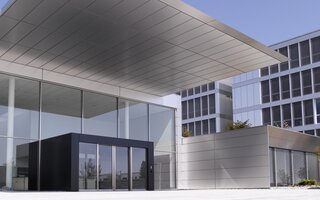BIM 101: Why choose BIM for your building?
Evolution is fundamental to our nature. Whether we’re talking about humanity as a species, different technologies or the tools we’ve created to build and maintain our lives on this planet – we’re always looking to move forward and develop. Think about architecture: from cottages and churches to skyscrapers and the Sydney Opera House, the way we construct buildings today is infinitely more complex (and streamlined!) than even our wisest predecessors could have imagined. And best of all, this bullet train ride to the future just pulled into its next stop: Building Information Modeling, a.k.a. BIM.
Anyone who works within the building industry has probably heard of BIM by now: how it’s quietly disrupting the traditional way we design, construct and/or maintain buildings themselves, requiring both a new technological approach and a much more collaborative, multi-dimensional mentality from everyone involved. Today, we want to dig a bit deeper and discover why you should opt for BIM instead of a classic, digitised drawing-based way of working: what the most important benefits of adopting the BIM mindset are, who they affect most, and most importantly: why you should switch to BIM sooner rather than later?
//Are you already a fan of BIM? Get in touch with us to find out more about how our automated doors perform as BIM objects in projects! //
More than "just some software"
Revit, Microstation, Vectorworks… These are all software programs where we can construct data-rich BIM models of our buildings. But – like we mentioned above – technology is only one half of the BIM mindset. The other? An open, collaborative attitude throughout the building’s life cycle, so that all involved teams and functions can work in sync whenever they need to.
It’s important to point this out because, even though BIM has been around since the mid-nineties (!), there are still companies who resist switching over to this new way of planning buildings. Most of them believe that getting to know the technology (i.e. software) behind BIM is, frankly, more trouble than it’s worth. And it’s certainly a valid point – if we believe the biggest value of using BIM is having a new, technologically advanced platform for designing our buildings. But the truth is, there’s so much more to it: the many values that come with using BIM to plan and construct your buildings are far more diverse and far-reaching than we’d expect! Here are just a few examples:
- Improved and streamlined preparation
Not only do BIM models let you plan more precisely in general – letting you see all data of your building model at once, from design to construction – but they also give you a keen view of what happens next. Visualising your entire building earlier than digitised drawings allow you to helps bring subtle connections to light before they would normally emerge. (Our favourite example for this: the built-in automated collision detection feature in BIM software.)
- Faster and more efficient workflow
From speedier design and construction processes – not to mention the increased number of opportunities for collaboration between teams! – to the overall higher quality of work as a result, using BIM boosts the entire planning workflow for your building. And the general efficiency of BIM models as opposed to the more classical, CAD-based drawing methods is not just something your co-workers will enjoy: it will definitely have an impact on production costs, too.
- Tangible effect on your visitors’ experience
When the workflow is better, the building gets better – which then has a tangible effect on everyone who goes on to use the building itself. Not just on their satisfaction levels, but their increased safety too: since you can see multiple plans at once (and even those of the neighbourhood) in BIM technology, pinpointing safety hazards becomes much more straightforward.
- Elevating you over your competitors
Last but not least, using BIM to plan your building makes your offer more competitive when you’re pitching for clients: after all, most larger building projects now require BIM to be part of the building process! And even when they don’t, you can also win bonus points in their tenders by demonstrating that BIM models are an integral part of your building’s planning process.
Not just for architects?
Obviously, most of the benefits BIM has to offer relates directly to the teams involved in planning, designing and constructing buildings themselves – like architects and construction managers. But that’s not to say other stakeholders won’t also find using BIM models to be useful for their work! Like manufacturers, for instance: from using this new, streamlined technology to reach new potential markets and clients at virtual BIM platforms, to enjoying all the early testing opportunities that BIM softwares allow, manufacturers will also see immediate effects on their work and business opportunities. That is, once they switch from digitised drawings to the BIM world.
But even engineers, owners or other building-related specialists will enjoy the increased transparency and efficiency BIM models have to offer. Which is important, because it ultimately comes down to more and more of us agreeing that BIM is, truly, the way forward for building design and construction. And the sooner this happens, the easier our jobs will be: because BIM is, for now, still a numbers game. So the more companies switch over to BIM models, the easier they will make it for everyone else to get on board too – reducing the (slightly steep) learning curve and contributing to the vastly more interconnected digital building landscape of tomorrow.
And isn’t that also our job as thinkers and planners of the future – to prepare for it today through processes and projects that contribute to a better tomorrow? After all, evolution will never slow down. And luckily, through using BIM and other new building technologies, we get to actively contribute towards this technological evolution ourselves.
Want to find out more about how we use BIM models when planning our entrance solutions? Just get in touch with us here!






